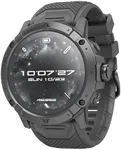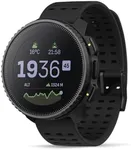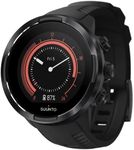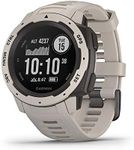Buying Guide for the Best Gps Watch Altimeter
Choosing the right GPS watch with an altimeter can significantly enhance your outdoor adventures, whether you're hiking, running, or cycling. A GPS watch with an altimeter not only tracks your location but also measures your altitude, providing valuable data about your elevation changes. To make an informed decision, it's important to understand the key specifications and how they align with your needs.Altimeter TypeThe altimeter in a GPS watch can be either barometric or GPS-based. A barometric altimeter measures altitude by detecting changes in air pressure, which tends to be more accurate and reliable, especially in areas with poor GPS signal. A GPS-based altimeter calculates altitude using satellite data, which can be less accurate but is still useful for general purposes. If you need precise altitude readings for activities like mountaineering or trail running, a barometric altimeter is the better choice. For casual use, a GPS-based altimeter may suffice.
Battery LifeBattery life is crucial, especially for long outdoor activities. GPS watches with altimeters can have varying battery life depending on the mode they are in. Some watches offer extended battery modes that reduce the frequency of GPS updates to conserve power. If you plan on using the watch for long hikes or multi-day trips, look for a model with a longer battery life or power-saving features. For shorter activities, a standard battery life should be adequate.
Durability and Water ResistanceDurability and water resistance are important factors to consider, especially if you plan to use the watch in harsh conditions. Look for a watch with a robust build, scratch-resistant glass, and a high water resistance rating. This ensures that the watch can withstand rain, splashes, and even submersion in water. If you're into activities like swimming or diving, make sure the watch has a water resistance rating that meets your needs.
Display and ReadabilityThe display should be easy to read in various lighting conditions, including bright sunlight and low light. Some watches offer customizable displays, allowing you to choose what information is shown and how it is presented. If you have specific preferences for data visibility, look for a watch with a high-resolution display and good contrast. For those who need to read the watch quickly and easily during activities, a larger, clearer display is beneficial.
Additional FeaturesMany GPS watches with altimeters come with additional features such as heart rate monitoring, route tracking, weather updates, and smartphone notifications. Consider which of these features are important to you. For example, if you want to monitor your fitness levels, a watch with heart rate monitoring and fitness tracking capabilities would be useful. If you need navigation assistance, look for a watch with detailed route tracking and mapping features.
User Interface and Ease of UseThe user interface should be intuitive and easy to navigate. Some watches have touchscreens, while others use buttons. Consider which interface you find more comfortable and easier to use, especially when wearing gloves or in wet conditions. A watch with a user-friendly interface will make it easier to access and interpret the data you need during your activities.
Compatibility and ConnectivityCheck if the watch is compatible with your smartphone and other devices. Many GPS watches offer connectivity features such as Bluetooth, Wi-Fi, and ANT+ for syncing data, receiving notifications, and connecting to external sensors. If you want to analyze your data on your phone or computer, ensure the watch can easily sync with your preferred apps and devices.















